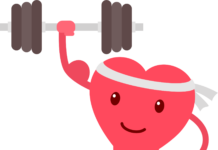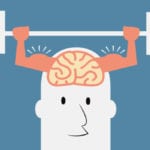The 2,000-year-old Chinese practice of tai chi is a branch of Qigong — exercises that harness the qi (life energy). Tai chi has been linked to numerous health benefits, including improvements in the quality of life of breast cancer patients and Parkinson’s sufferers. It has shown promise in treating sleep problems and high blood pressure.
A recent study found that tai chi promotes balance, flexibility, cardiovascular fitness, and strength. A group of research subjects who practiced tai chi improved more than 30 percent in lower-body strength and 25 percent in arm strength — nearly as much as a weight-training group and more than people who took up walking as exercise.
According to U.S. News & World Report:
“… [I]n 85 percent of trials, tai chi lowered blood pressure. Other studies have shown it to reduce blood levels of B-type natriuretic peptide, a precursor of heart failure, and to maintain bone density in postmenopausal women.”
In a similar vein, meditation is a known painkiller, and a new study has revealed why — meditation changes the way your brain processes pain signals. Researchers report that practicing mindfulness meditation for just four days affects pain responses in your brain. Brain activity decreases in areas devoted to monitoring a painful body part, and also in areas responsible for relaying sensory information.
Live Science reports:
“The practice known as mindfulness meditation involves sitting quietly and comfortably while breathing evenly. The idea is to clear the mind and focus the attention on the present.”
If you’re looking for a gentle, mind-body activity to add to your fitness routine, tai chi is a phenomenal choice. A form of Chinese martial arts, tai chi is an ancient form of self-defense that is said to support the balance of “yin and yang” in your body, thereby improving the flow of “qi,” or life energy.
Often described as “meditation in motion” or “moving meditation,” the activity takes your body through a specific set of graceful movements. Your body is constantly in motion and each movement flows right into the next. While practicing tai chi, your mind is meant to stay focused on your movements, relaxation and deep breathing, while distracting thoughts are ignored. More than 2 million Americans have already taken up this ancient art form, and you might want to join them once you learn about all of its benefits.
Tai Chi’s Impressive Health Benefits
Tai chi has been linked to a wide array of benefits for virtually everyone who does it, from kids to seniors and all ages in between. Part of the allure is that it’s so gentle, it’s an ideal form of activity for people with pain or other conditions that prevent more vigorous exercise. You can even do tai chi if you’re confined to a wheelchair.

In one of the newest studies, those who practiced tai chi gained improvements in balance, strength, flexibility and cardiovascular fitness. They also improved nearly as much as a strength-training group in both lower-body and arm strength. This gentle exercise has also been found to reduce blood pressure in about 85 percent of trials reviewed, while offering benefits for pain, stress and anxiety, too.
Other noted benefits include:
- •Improvements in physical condition, muscle strength, coordination, and flexibility
- •Better balance and mobility
- •Lower risk of falls, particularly in the elderly
- •Improvements in pain and stiffness, including arthritis pain
- •Improved sleep and overall wellness
- •Enhanced immune system
Further research has also found that after 12 weeks of tai chi, people with fibromyalgia did significantly better in measurements of pain, fatigue, physical functioning, sleeplessness and depression.
Scientists aren’t certain as to exactly why tai chi seems to benefit so many different health conditions, but it’s likely because it impacts your body on multiple levels — physical, psychological, social (tai chi is often done together as a group in parks and other outdoor spaces), and even spiritual. Undoubtedly, part of the benefit also comes from its mind-body influence, including its focus on meditation.
Whatever the mechanism, even respected conventional health institutions such as the Mayo Clinic and Harvard Medical School recommend Tai Chi for its health benefits, especially as a stress-reduction tool. However, there are more studies available than you might think; suggesting Tai Chi has an impressive range of health benefits. To browse through them, please see the WorldTaiChiDay.org web site.
Meditation in Motion
Tai chi is described as “meditation in motion” because your mind stays focused on your movements and remains in the present moment. This not only helps you reduce stress and anxiety, but it also offers similar benefits to meditation. Meditation has the power to actually alter the way your mind works by strengthening the areas of your brain that regulate attention and memory. When you’re better able to focus and concentrate, you can perform routine tasks quickly and efficiently, leaving yourself with the time and energy you need to take on new goals and challenges.
Rather than doing the same things the same way, with the same mindset and the same disappointing results, meditation allows you to set the stage for the changes you want to make in your life. But, like tai chi, meditation also offers benefits on a physical level. A new study found that mindfulness meditation, which involves focusing on your breathing and clearing your mind of worrying, judgmental thoughts, can reduce your perceptions of pain by 57 percent.
What’s more, this benefit came from just four days of meditation! So you needn’t be a meditation master to expect to see results. Past studies have also linked meditation to a host of health improvements, including helping to relieve:
- •Chronic pain, including headaches
- •High blood pressure
- •Respiratory problems such as emphysema and asthma
- •Sleep disturbances and fatigue
- •Gastrointestinal distress and irritable bowel syndrome
- •Skin disorders
- •Mild depression and premenstrual syndrome
- •RA (rheumatoid arthritis) symptoms
Qigong Found Effective for Pain and Anxiety
A 1999 study into the effects of qigong on pain confirmed that, whatever the mechanism, this type of gentle exercise does have a marked effect.In this block-random placebo-controlled clinical trial, participants aged 18 to 65 suffering with complex regional pain syndrome type I received either qi emission and qigong instruction by a qigong master, or a similar set of instructions by a sham master.
The study concluded that:
“Among the genuine qigong group, 82 percent reported less pain by the end of the first training session compared to 45 percent of control patients. By the last training session, 91 percent of qigong patients reported analgesia compared to 36 percent of control patients. Anxiety was reduced in both groups over time, but the reduction was significantly greater in the experimental group than in the control group.”
If You Want to Give Tai Chi and Meditation a Try …
You can learn tai chi at home from books or DVDs, but joining a class with an experienced instructor will ensure you’re doing the movements correctly and safely. Many areas now offer courses in tai chi, so check your local health club or yoga studio for classes in your area.
You can also take professional courses in meditation, or join in a group meditation session, which are often offered by yoga studies or certain religious centers. This is an excellent way to fully immerse yourself in this activity, but you can also try it on your own.
To test your meditation wings, sit quietly, perhaps put on some soothing music, and close your eyes. Breathe rhythmically and focus — on your breathing, a flower, an image, a candle, a mantra or even just being in the moment. If you find that your mind starts to wander, direct it back to your focus point and continue from there.
Ideally, set aside 15-20 minutes a day to practice meditation. You can also try it in shorter segments, but ultimately try to work your way up to 20 minutes. Remember, tai chi can also act as a form of meditation, so if you’re just starting out and don’t feel you have time for both, you can use your tai chi as your meditation session.
Sources and References
- U.S. News & World Report November 26, 2010
- Live Science November 18, 2010
- Society for Neuroscience Annual Meeting, San Diego, California November 16, 2010



























Enjoyed the article. Been doing tai chi for 1 yr now…seeing health improvements with my mood and sleeping.
Hi Ed,
Nice to hear positive changes with the Tai Chi. Best to you.
In Health,
Watzup Today